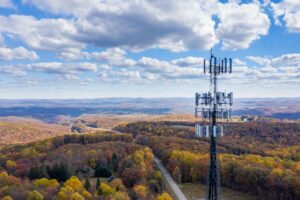The Freedom Foundation of Minnesota is consistently on the prowl to shed light on broadband boondoggles across the region. Earlier this week we talked about how the Willmar broadband plan is destined to fail. Since we were talking broadband this week we thought we’d remind you of a Wall Street Journal editorial from a couple of years ago that highlighted President Biden’s $100 billion broadband boondoggle.
The infrastructure bill slates tens of billions for rural networks. History suggests most will be wasted.
The Biden administration’s $1 trillion “infrastructure plan” has generated controversy, but few doubt that America is in need of repair. President Biden’s words resonated when he claimed that “America is 13th in the world in infrastructure.”
Included in the bipartisan package are broadband-deployment subsidies. Mr. Biden asked for $100 billion. The Republicans and Democrats compromised at $65 billion in the “Infrastructure 1” package. Most of that, $42 billion, is slotted for subsidies to rural communications networks, promising to conquer the “digital divide.”

This is doubtful. The government has already expended at least $200 billion (in 2021 dollars) on the “universal service fund” established by the 1996 Telecommunications Act. Most of the money was meant to extend networks that serve rural areas, but some was also allocated to schools and libraries, health-care facilities and low-income mobile-phone users.
This money had little impact on network infrastructure. In 2011 the Federal Communications Commission found that 19 million people, living in seven million households, couldn’t get state-of-the-art broadband service. Ten years later, despite another more than $50 billion in subsidies for high-cost networks, the number in underserved areas was as many as 30 million, according to Mr. Biden.
It’s unlikely that another big batch of carrier subsidies will complete broadband infrastructure. The government has operated with a stunning lack of accountability, despite a steady stream of Government Accountability Office warnings that the system needs far better oversight. It was revealed in a 2006 study that Sandwich Isles Communications had received more than $13,000 per home a year to offer old-fashioned landline phone service to a small town in Hawaii. This was when economists considered any wireline service over $1,000 annually to be unreasonably expensive, as satellite options were available at lower cost. The outrageous outlays continued, paid for with a regressive phone tax that hit low-income households hardest.
The FCC didn’t see the absurdity until 2015, when the Internal Revenue Service won conviction of the Sandwich Isles owner on six criminal counts of fraud for padding expenses. The company never served more than 3,659 customers.
The episode reveals stunningly scant oversight of the huge money flows, which in this instance reimbursed management massages, $1.3 million for a private residence in California, and tuition at private schools for the boss’s kids. The vast majority of internet operations receive no subsidies yet offer fixed broadband access to 96% of U.S. households, according to FCC data, or 90% according to the administration’s, with 4G/5G wireless and satellite covering virtually all of the rest.
The carriers that do receive payments don’t appear to expand the network by much, and their customers would be served without the subsidies. Economists Greg Rosston and Bradley Wimmer published a 2000 study that estimated that totally eliminating subsidies (and the taxes to pay them) would reduce telephone coverage by no more than 0.3%. With the competition we now have in broadband—with cable, mobile networks and satellites now added to the mix—the impact could be even less today.
One key reform suggested by economists has been tried. In 2011 the Obama administration decided to use auctions to distribute some broadband subsidies, expecting to force down costs and increase the number of locations served. In 2018, the first major test of competitive bids, savings averaged 70%. A driver of these savings was technological neutrality, the government’s refusal to dictate the technology used. The biggest 2018 auction winner was Viasat, a satellite operator that agreed to offer broadband service to 190,000 addresses (nearly a third of the total funded) in exchange for government outlays less than 10% of the FCC’s traditional formula.
Despite this lesson, most subsidies are still distributed using the government’s cost-plus model, with companies receiving more money when they have implausibly high overhead. Administrative costs are where most of the money goes. A 2019 GAO study was titled “FCC Should Take Additional Action to Manage Fraud Risks in Its Program to Support Broadband Service in High-Cost Areas.”
The GAO is right. We need to eliminate the rampant waste, fraud and abuse before we hand out another $42 billion to internet service providers.
Mr. Hazlett is a professor of economics at Clemson and Chapman universities. He served as chief economist of the FCC, 1991-92.




